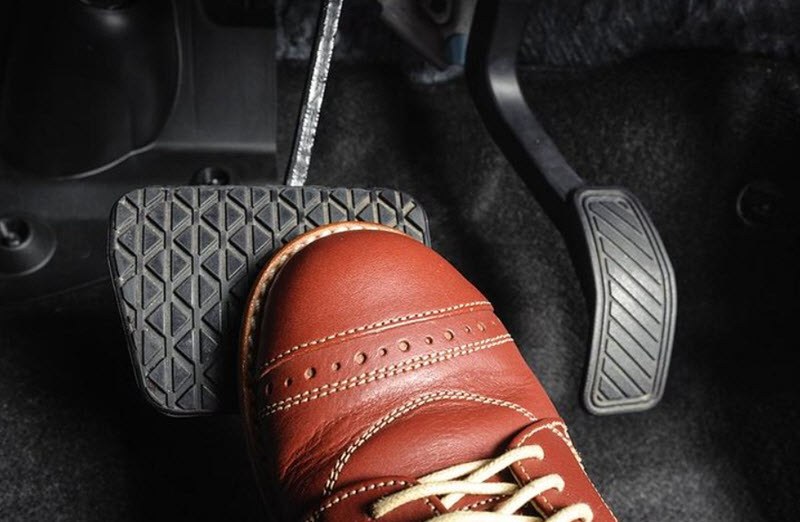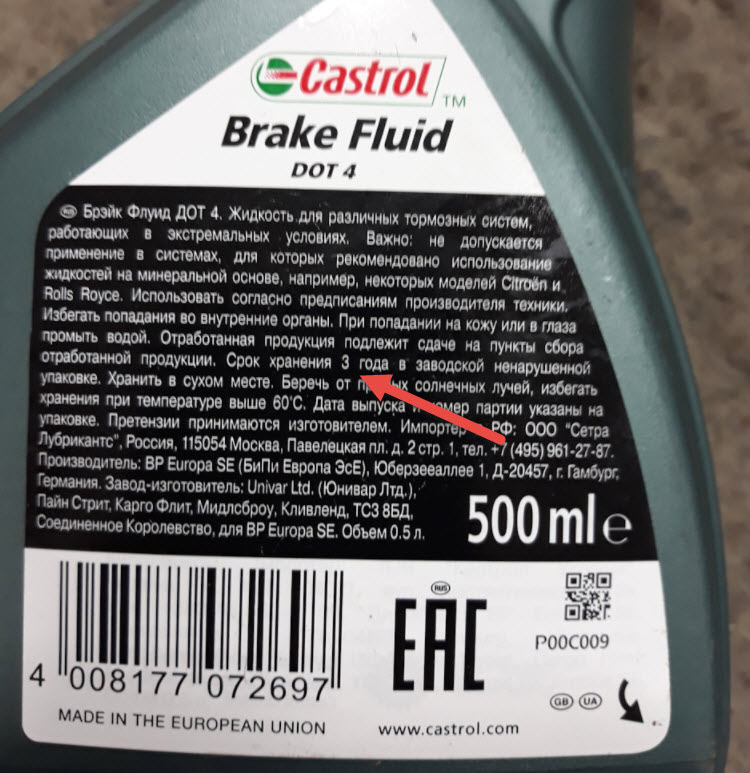
Why did the brake pedal become soft after replacing the brake pads
Content
Even something as simple as changing brake pads is, in fact, a repair intervention in the most important safety system. You need to know all the subtleties and possible consequences of the process, which many underestimate, and after completing the work, they may be unpleasantly surprised by the consequences.

One of the troubles that appeared is the failure (softness) of the pedal to the floor instead of the usual viscous and powerful braking.
Why does the pedal fail after replacing the pads
To understand the essence of what is happening, it is necessary to clearly understand, at least on a physical level, how the car's brake system works. What exactly should happen after pressing the pedal, and what happens after erroneous actions.
The pedal rod through the main hydraulic cylinder creates pressure in the brake lines. The fluid is incompressible, so force will be transferred through the slave cylinders in the calipers to the brake pads and they will press against the discs. The car will start to slow down.

The clamping force on the pads should be significant. The coefficient of friction of linings on cast iron or steel of the disk is not very large, and the friction force is determined precisely by its product by the pressing force.
From here, the hydraulic transformation of the system is calculated, when a large pedal movement leads to a small pad travel, but there is a significant gain in strength.
All this leads to the need to place the pads at a minimum distance from the disc. The self-advance mechanism works, and the surfaces of the pads and disc that come into contact must be perfectly flat.
After replacing the pads for the first time, all conditions for normal operation will be violated:
- when removing old and installing new parts, the pistons of the working cylinders were sunk into the calipers as much as possible, otherwise, due to the difference in the thickness of the pads, installation is not possible, fresh pads stood up with an abnormal gap;
- the old pads were run in to the discs, as a result of which a relief appeared on all surfaces, but its depressions and protrusions coincided with the mating surface, this had almost no effect on the work;
- new parts will have to contact the worn disk for some time, before running in, not with the entire surface, but only with protrusions;
- even if new flat discs are installed, the ideal mating of the surfaces will not come immediately, the braking efficiency will decrease, which means the pedal travel will increase.
All this will lead to two undesirable effects. After the first press, the pedal will fail, and there will be no deceleration. The stroke of the cylinder rod will be spent on moving the pads to the discs, several clicks may be required due to the large conditional gear ratio of the drive.
In the future, the pedal will be softer than usual, and the brakes will be less viscous due to incomplete contact of the pads with the discs.
In addition, some pads have such a property that in order to enter the operating mode, they need to thoroughly warm up and gain the necessary qualities of the lining material, which will increase the friction coefficient to the calculated, that is, familiar.
How to troubleshoot
After replacement, two simple rules must be observed to ensure safety.
- Without waiting for the car to start moving, after which it will gain kinetic energy and require a stop in front of an obstacle, it is necessary to press the pedal several times until it gains the desired hardness and slow speed before it trips.
- After replacement, it is necessary to adjust the level of the working fluid in the master cylinder reservoir. Due to the change in the position of the pistons, part of it could be lost. Until air enters the system, when pumping of air lines is required.


Watch this video on YouTube
This will be the end of the job, but the effectiveness of the brakes is still unlikely to be restored immediately.
What to do if the car brakes badly after replacing the pads
In most cases, the car will brake better as the pads rub against the discs. This is a natural process, nothing more than a certain period of caution is required.
The car will still stop confidently, but the effort on the pedals will increase for this. It may take tens of kilometers to fully restore normal operation.


Watch this video on YouTube
But it happens that the effect of weakened braking does not go away, and the pedal remains too soft and requires a lot of travel and effort.
This may be due to the peculiarities of the lining material of new parts. Each manufacturer has its own approach to development:
- too hard pads wear out little, but brake poorly and quickly consume the disc;
- excessive softness provides good viscosity of the brakes, but also rapid wear of the pads;
- some parts are more adapted to a sporty driving style and require warming up to increase the coefficient of friction;
- cheap civilian products, on the contrary, quickly overheat and begin to slow down badly;
- according to the composition of the lining material, all pads are different, iron, copper, carbon fiber, ceramics and a wide variety of organic and other binder materials are used, as a result, it may seem to the driver that the replacement rules have been violated, this is not always the case.
Finally, it is possible to draw a conclusion about serviceability only after a certain run. If the unpleasant effects do not go away and do not change, it is necessary to check the condition of the brake system, it is possible to change the pads to better ones again.
It also helps to replace the discs if the old ones are badly worn out, although not to the maximum thickness. But in the case of obviously badly working brakes, action must be taken immediately, this is a safety issue.
